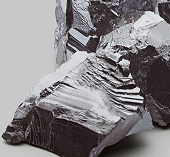Lithium-based compounds have become a primary ingredient of the lithium-ion batteries used in hybrid electric vehicles (HEV), plug-in hybrid electric vehicles (PHEV) and electric vehicles (EV). The amount of lithium consumed by these types of vehicles varies, but it is substantial even now when the fleet of such cars is relatively small. However, with recent plans for the substitution of combustion engine vehicles unveiled by many countries the shortage of lithium can become quite real.
In 2016, for the first time in history, over 70 million cars passenger cars were produced in a single year. Therefore, the conversion of only a half of these cars into electric vehicles would require an enormous amount of lithium. Of course, the consumption of lithium per car decreases due to advances in battery technology, while the new types of electric batteries are being developed, which may lessen the dependence on lithium.
However, these technological advances can hardly address the issue alone. The lithium dearth situation can be exacerbated by the fact that the demand for lithium seems to not abate in the coming years, demonstrating an average growth rate of about 7-9% per year. Another inhibiting factor could be limited lithium resources, which are even hard to estimate and very difficult to mine (the mining method is laborious and expensive). In general, the reserves of this metal are relatively modest and characterised by the high level of monopolization both geographically and corporately. Over 90% of world lithium production (in metric tons by lithium content) comes from Chile, Australia, China, and Argentina.
Major lithium-manufacturing countries (by metric tons of lithium content)

On a corporate level, major manufacturers are as follows: Sociedad de Quimica Minera de Chile SA, or SQM (in May 2018, the Chengdu-based Tianqi has agreed to acquire a 24 percent stake in Chile’s SQM, one of the world’s largest lithium producers), Rockwood Lithium (former Chemetall), FMC Corp., and Talison Lithium. Another reliable source of lithium could be the recycling of lithium-containing products. Nevertheless, lithium output from all these sources may be insufficient, thus making the transition to electric vehicles unsustainable as it becomes dependent on another non-renewable resource, in this case, lithium.
Find more information on the lithium market in the in-demand research study “Lithium: 2018 World Market Review and Forecast to 2027”.
